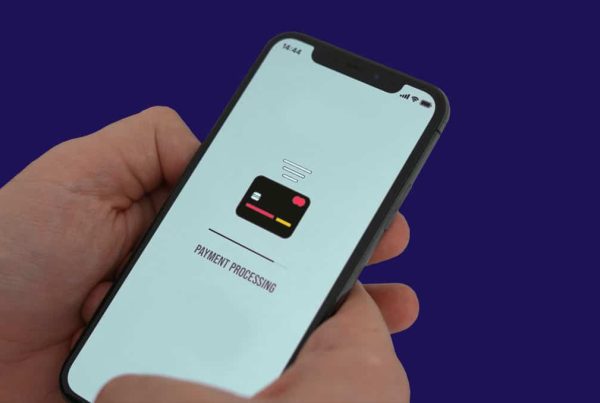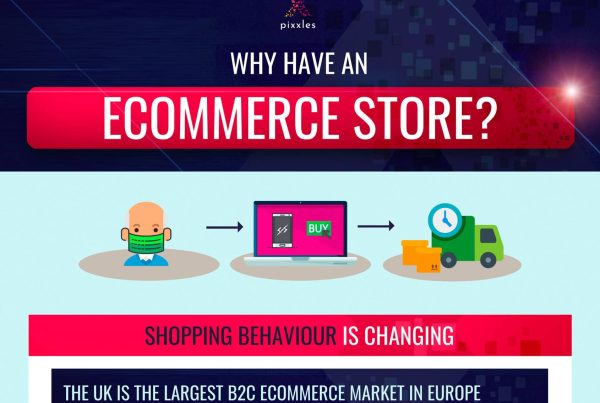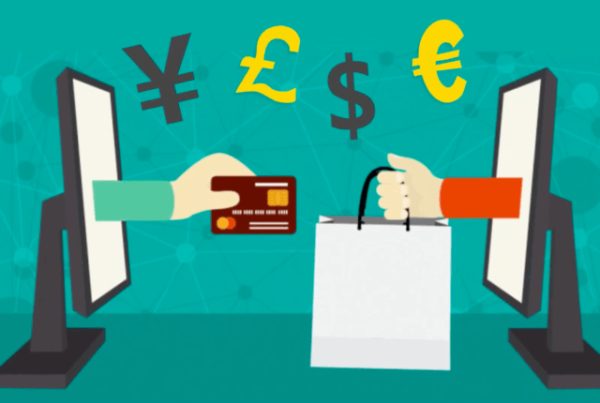Payment Fraud Defined
Payment fraud is any illegal transaction that a cybercriminal performs. This includes a variety of deceptive practices, such as unauthorized card transactions and manipulating payment systems.
Payment Fraud Prevention Overview
Did you know that payment fraud hemorrhages billions of dollars globally every year? Even worse, the cost of cybercrime is increasing as criminals become more subtle and sophisticated in their methods.
According to Cybersecurity Ventures, the cost of global cybercrime is expected to reach 10.5 trillion USD annually by 2025, compared with 3 trillion USD annually in 2015. While not all of this is due to payment fraud specifically, payment fraud does have a part to play.
Exact figures are difficult to pinpoint, but we do know the increase in payment fraud is partly due to the rise in ecommerce and the number of card-not-present transactions. It is usually much easier for criminals to perform fraud from behind a computer screen than when they are buying something from a store in person.
With electronic transactions, there’s no need for a physical counterfeit card or any direct interaction with cashiers. Additionally, cybercriminals have the ability to target businesses and individuals anywhere in the world.
With this in mind, every ecommerce merchant needs payment fraud prevention to keep their business safe, and the best way to do this is to first know what kinds of payment fraud exist.
Keep reading for an overview of the different types of payment fraud to help protect your business.
What Is Payment Fraud?
In the context of ecommerce, payment fraud is, essentially, any transaction that is made without the account holder’s permission. The negative impacts of payment fraud are far-reaching and multifaceted and include the following:
Financial loss, damage to the cardholder’s credit score, emotional stress, reputational damage, and other kinds of harm.
The bottom line: Payment fraud hurts businesses. It is not a victimless crime!
What Businesses Are Most At Risk of Payment Fraud?
Payment fraud can affect virtually any business. However, certain sectors are more prone to being targeted due to the nature of their operations. These include:
- Ecommerce
- Retail
- Banking and finance
- Online gaming and entertainment
- Healthcare
- Travel and transportation
- Telecommunications
- Real Estate
- Insurance
- Hospitality
How Does Payment Fraud Occur?
Payment fraud occurs when criminals gain unauthorized access to payment details, often via stolen cards or purchasing information from the dark web. However, other subtler attack vectors also exist.
For instance, fraudsters might manipulate direct debits, diverting funds to their own accounts. This is just one weapon in their ever-growing arsenal.
» MORE: UK cybercrime and protecting your ecommerce business!
Specific Methods of Payment Fraud
Payment fraud methods in use today include the following.
Credit and Debit Card Fraud
That is:
(1) Card Not Present (CNP) fraud, (2) Lost and Stolen Card fraud, (3) Card Verification Fraud, (4) Application Fraud, and (5) Mail Non-Receipt Card Fraud.
Regarding Lost and Stolen Card fraud, it is arguably less common than CNP fraud, but it can still lead to chargebacks and higher transaction fees.
Card Testing Fraud
The rise in online transactions has ushered in an unfortunate surge in card testing fraud, also known as card cracking. Ecommerce sites, irrespective of their size, face frequent and targeted attacks by cybercriminals.
At the heart of the problem are automated bots, which conduct high-volume attacks, testing thousands of card numbers in rapid succession to identify cards they can use.
Gift Card Fraud
Gift card fraud is another category that has increased in recent years due to the nature of gift cards, which are, for better or worse, easily transferable and difficult to trace.
Online scammers take advantage of this fact by impersonating the HMRC or sometimes even the police. They use scare tactics to convince victims to settle imaginary debts with gift cards, effectively laundering the victim’s money.
Physical tampering is another method used by thieves, who sift through gift cards in stores, record the card numbers, and then continuously check online or call the cards’ toll-free numbers to see if they have been activated.
Lastly, reselling fraud is when fraudsters purchase gift cards using stolen credit card information and then sell these gift cards at a discount. This is essentially another form of money laundering, turning stolen credit information into cash.
Phishing and Business Email Compromise (BEC)
While phishing usually aims to steal personal information or login credentials from users, BEC specifically targets employees with access to company finances to deceive them into making unauthorized transfers.
Both methods rely on deceptive emails to trick recipients.
Social Engineering Attack – Vishing
Vishing is a phone-based scam in which an attacker pretends to be a bank or service provider to extract personal details from the victim.
Account Takeover Fraud and Identity Theft
Account takeover fraud occurs when a cybercriminal gains unauthorized access to an account (like a bank or online shopping account).
Identity theft, meanwhile, is when a cybercriminal uses someone’s personal information to commit fraud, which might include account takeovers but can include other actions as well.
Skimming
Skimming is a form of identity theft where the criminal uses a small device, known as a skimmer, to steal credit card information.
First, the thief illegally installs the skimmer onto the card reader. Next, when someone swipes their card through the compromised reader, such as those found on ATMs or gas pumps, the skimmer stores the card data.
This can be used later to create counterfeit cards or conduct fraudulent transactions online.
Chargeback Fraud / Friendly Fraud
Chargeback fraud, also known as friendly fraud, is when a customer deceitfully initiates a chargeback with their bank after they’ve received the goods or services.
For merchants, this can lead to fines, higher transaction fees, and even getting placed on watch lists by card networks (like Visa or Mastercard).
Pagejacking
Pagejacking is where a fraudster copies a webpage from a legitimate website, then alters the page’s coding to redirect visitors to a deceptive or malicious site. This technique is used to steal personal and financial information from unsuspecting users.
Bank Fraud
There are different kinds of bank fraud, such as account takeover fraud, check fraud, and wire transfer fraud.
Wire Transfer Fraud
Wire transfer fraud comes in different forms. For example, in the case of CEO/CFO impersonation, fraudsters pretend to be high-ranking company personnel, typically through email, to manipulate employees into conducting unauthorized wire transfers.
Vendor impersonation, meanwhile, is when fraudsters pretend to be familiar vendors or suppliers for various purposes, such as sending counterfeit invoices.
Another form of wire transfer fraud is the advance fee scheme. Here thieves convince their victims to pay an upfront fee to join a business venture that doesn’t actually exist.
Vendor Fraud
Vendor fraud relies on deceptive practices, such as fake invoicing, advance fee fraud, overcharging, and return fraud.
In ecommerce, this typically means faking invoices for undelivered goods or services, as well as charging beyond the initial agreed amount.
Return fraud, meanwhile, includes wardrobing (returning used items), price arbitrage (buying discounted items and returning them at a higher price), and receipt fraud.
Mobile Payment and Wallet Fraud
Mobile payment and wallet fraud pose significant threats to ecommerce merchants.
One example is SIM swap fraud, where attackers hijack a victim’s phone number and redirect calls and SMS messages to their own devices.
Other Forms of Identity Theft
There are additional strategies that criminals use other than the ones mentioned above.
New account fraud, for instance, is where a thief uses a stolen identity to open a new account, whether it be a banking account, ecommerce profile, or something else.
Synthetic identity fraud, meanwhile, is where the perpetrator concocts a completely new identity by merging both real and fabricated information. This often includes mixing stolen National Insurance Numbers with false names and birth dates.
» MORE: Pixxles Security and Compliance: How we keep merchants safe and secure
How Can Payment Fraud Impact Your Business?
Payment fraud can have far-reaching implications for a business, such as:
- Financial loss (direct financial losses, plus the cost of investigating and rectifying fraud)
- Regulatory consequences (data protection standards, if breached, can result in fines)
- Legal consequences (lawsuits are possible if customer information is stolen or misused due to negligence)
- Reputational damage (payment fraud can lead to a loss of customer trust)
- Chargeback fees (incurred when the real cardholder disputes a fraudulent transaction)
- Increased payment processing costs (after a fraud incident, payment processors might classify your business as high-risk, resulting in higher processing fees)
- Operational disruptions (addressing payment fraud is time-consuming and disruptive)
- Employee morale (fraud incidents can cause stress among employees, especially if their job security is threatened due to financial losses)
- Increased costs for security upgrades (businesses may need to invest in costly security measures)
How to Protect Your Business From Payment Fraud
Now that we’ve talked about the different types of payment fraud, let’s look at how to protect your business.
Manually review certain transactions
Did you know that, while automated fraud detection systems are essential, they can sometimes generate false positives or negatives? This is one reason why manually reviewing high-risk transactions can, in certain cases, lead to more accurate payment fraud detection.
Another compelling reason for manually reviewing certain transactions lies in the value of human intuition and experience. AI and machine models, while incredibly efficient at processing vast amounts of data, can sometimes miss subtle signs of fraud that a trained human might catch.
Use secure payment methods
Beyond the basics of encrypted online payment systems, as an ecommerce merchant, you might consider using the following:
- NFC contactless payments
- EMV chip cards
- Tokenization methods
- 3D Secure (3DS)
Bolster your network security
Everyone is aware of the common ways to protect your network security, such as antivirus software and firewalls. Here are some other ways to enhance your network security.
- Intrusion detection/prevention systems
- Security audits
- Patching and updates
- Secure Sockets Layer (SSL)
- Transport Layer Security (TLS) encryption
- Multi-Factor Authentication (MFA)
- Employee training
- Disaster recovery plan (outlines how to respond in the event of a security breach)
- Regular data backups
Keep updated on fraud trends
The world of cybercrime is continually evolving, with new techniques and tactics constantly being developed. To stay ahead of the latest tactics in payment fraud and cybercrime, we suggest working with an FCA-authorised payment processor!
» MORE: Pixxles is authorised by the Financial Conduct Authority
Work with Pixxles
At Pixxles, we’re not just another payment processor. We’re an FCA-authorised partner that is genuinely passionate about putting you, the merchant, first. We’re all about transparency. No hidden fees. Just honest, straightforward pricing that puts you in control.
We also understand that in the fast-paced world of ecommerce, you need a payment solution that’s not just reliable and secure but one that works for you. That’s why we’ve developed a platform designed to streamline your operations, boost your efficiency, and let you focus on what you do best—growing your business.








